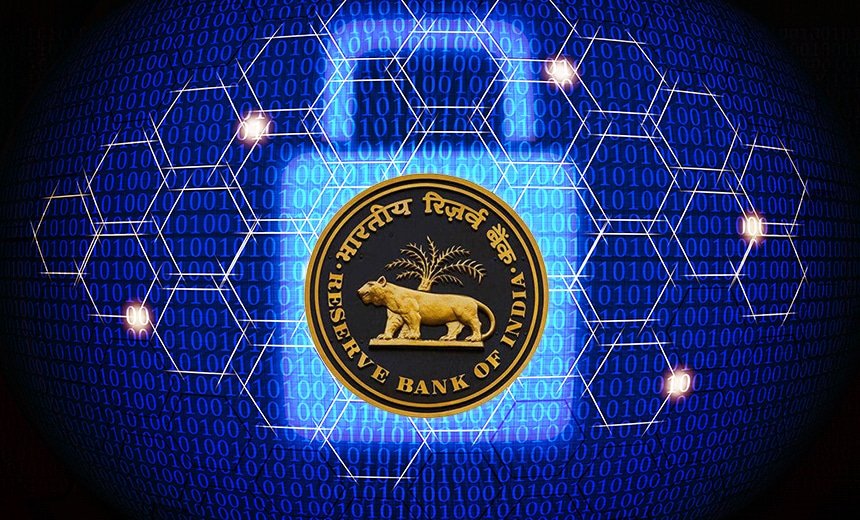At a time when India’s financial system is being rapidly redefined by technology, the Reserve Bank of India is sounding a note of caution. Deputy Governor Swaminathan J has warned that the growing influence of algorithms, data-driven platforms, and fintech concentration could create new forms of systemic risk even as they expand access and innovation in the financial sector.
Algorithmic Risks and the Fragility of Interconnected Systems
In a speech in Mumbai on Wednesday, Reserve Bank of India (RBI) Deputy Governor Swaminathan J cautioned that the financial system’s growing dependence on algorithmic decision-making and data-driven technologies could amplify risks in ways traditional oversight mechanisms are ill-equipped to handle.
FCRF Launches CCLP Program to Train India’s Next Generation of Cyber Law Practitioners
“Unmanaged risks from algorithmic decision-making, heavy reliance on data, and linked technologies can quickly spread from individual institutions to the financial system,” Swaminathan said.
He added that as fintechs, digital platforms, and embedded finance models expand, they also introduce new vulnerabilities, including concentration risks when a handful of platforms dominate crucial services.
The deputy governor’s remarks come amid the RBI’s broader push to monitor the intersection of finance, data, and technology, an area increasingly central to India’s financial inclusion strategy. While digital ecosystems have enabled millions of new users to access banking and credit, they have also increased dependencies on complex, opaque modelswhose failures can have cascading effects.
A Call for Digital Risk Governance
Swaminathan’s comments underscore the RBI’s evolving stance: technological progress and financial safety must advance together. “Innovation and safety are not opposing goals; when balanced well, they reinforce each other and build lasting trust,” he said.
The central bank has repeatedly encouraged financial institutions to embed digital risk safeguards into their governance frameworks. This includes adopting AI ethics principles, establishing audit trails for automated decision systems, and developing protocols for data privacy and cybersecurity resilience.
Regulators are also grappling with how to supervise non-traditional financial players, such as payment aggregators and lending fintechs that often operate outside conventional banking oversight. Swaminathan’s remarks suggest the RBI sees governance—not prohibition—as the pathway to ensuring stability without stifling innovation.
Unified Lending Interface: India’s Next Fintech Leap
Turning from risks to opportunities, Swaminathan highlighted the potential of the Unified Lending Interface (ULI) as a transformative platform for credit distribution. Launched in August 2024, ULI seeks to connect borrowers, lenders, and digital loan service providers through an open, interoperable digital infrastructure — much like what the Unified Payments Interface (UPI) did for payments.
“India is developing the Unified Lending Interface, which seeks to bring the same principles of openness and interoperability to credit markets. Just as UPI made payments universal, ULI has the potential to mark a turning point in how affordable credit is accessed and delivered at scale,” Swaminathan said.
By reducing appraisal times and simplifying technical integrations, the RBI hopes the platform will accelerate affordable, transparent lending, particularly for small borrowers and rural enterprises. Analysts say ULI could also help standardize digital lending practices, a sector that has faced criticism for opaque algorithms and predatory lending apps.
From UPI to a Layered Digital Architecture
Swaminathan also placed India’s digital transformation in historical context, tracing the evolution from UPI to a broader, multi-layered digital payments architecture.
“While UPI has rightly captured global attention, it represents only the most visible part of a much wider transformation,” he noted. Behind UPI stands an ecosystem that includes NEFT and RTGS for retail and high-value transfers, the Bharat Bill Payment System (BBPS) for bill settlements, the Aadhaar Enabled Payment System (AePS) for micro-ATM access, and BharatQR for merchant transactions.
Together, these platforms form what the RBI describes as a resilient and inclusive digital architecture. “They ensure that digital transactions are not only fast and convenient but also secure, accessible, and trusted,” Swaminathan said.
Economists view this integrated system as the backbone of India’s transition from a cash-dominated economy to a digital-first ecosystem—one that emphasizes interoperability, transparency, and financial inclusion at scale.
Balancing Innovation and Prudence
Swaminathan’s address reflects a broader policy challenge confronting global regulators: how to embrace fintech innovation without compromising systemic stability. As algorithms increasingly dictate lending, risk scoring, and credit flows, the RBI’s warning signals a shift from mere facilitation to active stewardship of digital transformation.
“Innovation can be a force multiplier for inclusion,” Swaminathan said, “but without guardrails, it can also magnify fragilities.”
In the world’s fastest-growing fintech market, India’s central bank is trying to ensure that digital progress is not only efficient but also equitable — and, most importantly, safe.


